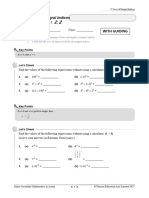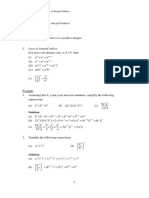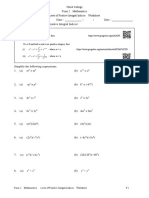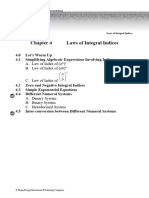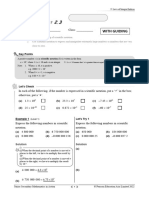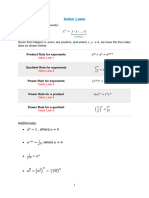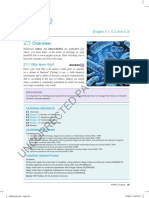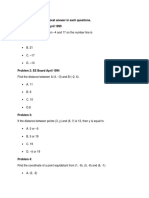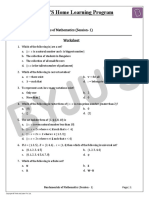0% found this document useful (0 votes)
24 views9 pages(Guide) LessonWS 3A02 01e
This document discusses the laws of positive integral indices. It states that if a ≠ 0 and m and n are positive integers, then:
(i) am × an = am+n
(ii) am/an = am-n
It provides examples of simplifying expressions using these laws, such as (x6 × x4)3 = x18. Worked examples with increasing levels of difficulty are given to illustrate the application of the laws.
Uploaded by
kwokrenee827Copyright
© © All Rights Reserved
We take content rights seriously. If you suspect this is your content, claim it here.
Available Formats
Download as DOCX, PDF, TXT or read online on Scribd
0% found this document useful (0 votes)
24 views9 pages(Guide) LessonWS 3A02 01e
This document discusses the laws of positive integral indices. It states that if a ≠ 0 and m and n are positive integers, then:
(i) am × an = am+n
(ii) am/an = am-n
It provides examples of simplifying expressions using these laws, such as (x6 × x4)3 = x18. Worked examples with increasing levels of difficulty are given to illustrate the application of the laws.
Uploaded by
kwokrenee827Copyright
© © All Rights Reserved
We take content rights seriously. If you suspect this is your content, claim it here.
Available Formats
Download as DOCX, PDF, TXT or read online on Scribd
/ 9
